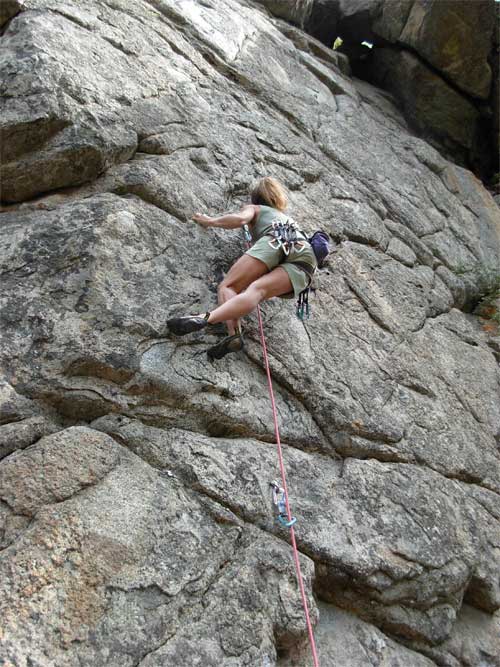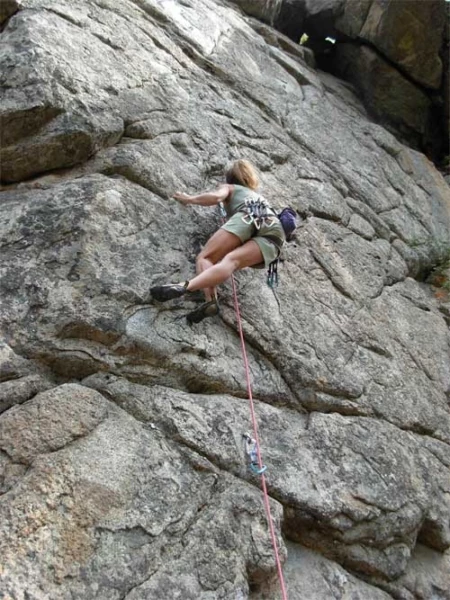How Lynn Hill Trains for Physical Endurance

My last post addressed the mental aspect of endurance training. The following post will address the basics elements of the physical side of endurance training.
Free climbing involves a combination of both power and endurance. Some people are better suited to one type of climbing or the other. I like all types of climbing but I do best on routes that require more endurance than power. This may be because I have a higher percentage of slow-to-fast twitch muscle fibers. Each person is born with a certain proportion of slow and fast twitch muscle fibers. Fast twitch muscle fibers provide short bursts of power and are fueled by an energy system called glycolysis. A person can develop more endurance through training but, apparently, the ration of fast-to-slow-twitch fibers cannot be increased.
Slow twitch muscle fibers are fueled by another energy system called the Krebs cycle. This is much more efficient for activities of long duration but much slower to yield energy because of the number of steps required to liberate this energy in the cells. Depending on the intensity and duration of the exercise, one or both of these energy systems may be used. This is why it’s beneficial to vary the intensity and duration when planning a training program. But if endurance is the goal, then one’s training should be designed accordingly.
In order to train endurance, I climb as many pitches as possible and I don’t usually rest very long between climbs. Endurance training doesn’t require as much recuperation time between efforts as power training. Depending on the degree of endurance I want to train, I will vary the level of intensity of my training. For moderate endurance, I choose to climb several moderately hard routes at about 70-85% of maximum intensity (50-60 moves). Or better yet, I climb long multi-pitch routes at a moderately high level of intensity.
When I trained for my free ascent of the Nose, I did up to twenty-pitches per day, in addition to climbing on my artificial climbing wall at home in order get as much mileage in as possible. I also ran about one-hour- or sometimes an hour-and-a-half per day. I needed to have plenty of stamina in order to arrive at the crux sections of the climb with enough strength left to free climb them. The first crux, The Great Roof, is located nearly 2,000 feet off the ground. The Changing Corners pitch is the most difficult section of the climb and it’s located over 2,500 feet off the ground. I figured if I followed my sense of intuition and climbed the lower section of the route very efficiently, without using much of my strength reserves, I would have enough power to free climb the entire route. But the hardest part about free climbing these sections was not the physical difficulty but the psychological challenge. The type of climbing up there on the Captain is very “touch-and-go,” which requires a lot of delicate technique, a keen sense of timing, and a lot of confidence. Certainly the fact that I was in the best shape of my life for this kind of climbing marathon helped give me the confidence that I could do it.
In my next post I will address other forms of training that I consider useful for climbing and for avoiding overuse injuries.
Lynn’s Tips & Training Series
How I Train Pt. 1 – Mental Endurance
How I Train Pt. 2 – Physical Elements of Endurance
Breathing and Energy Flow
Muscular Balance
Setting Realistic Goals
Motivation
Traversing Techniques
It Takes a Village to Raise a Child

